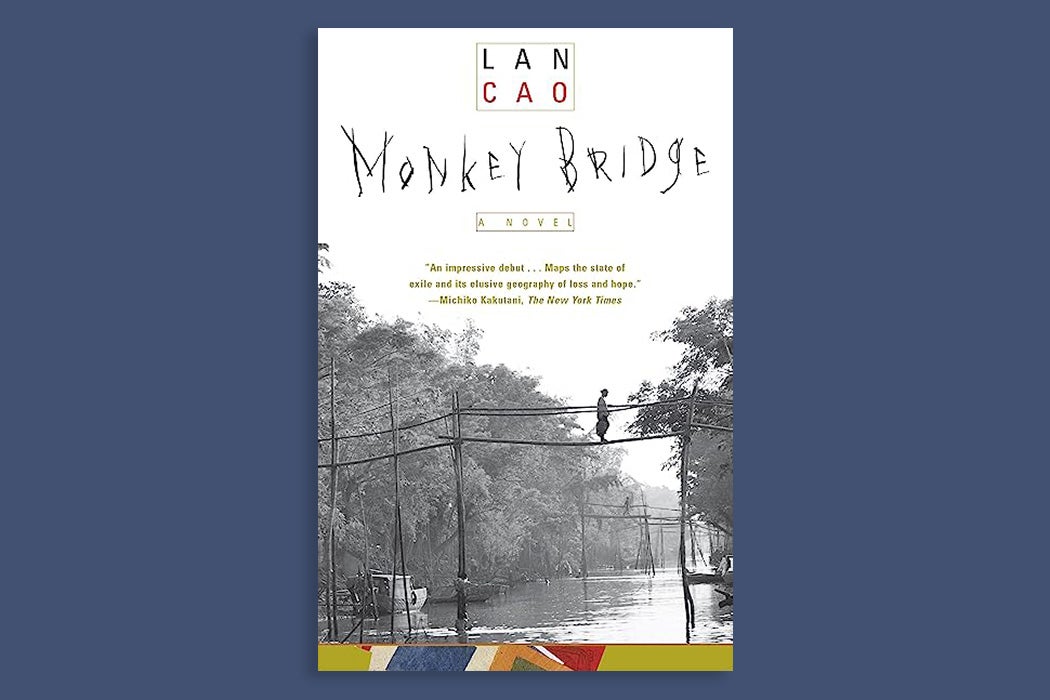Monkey Bridge, Lan Cao’s deceptively simple 1997 book about a mother and daughter in conflict, is rightly recognized as an Asian American literary classic. (It’s sometimes credited as the first Vietnamese American novel in English, even though Trần Văn Dĩnh’s Blue Dragon, White Tiger was published in 1983.)
Part of Monkey Bridge’s distinction may come from how it’s been marketed as a “culturally representative” text—another installment in a line of “authentic” Vietnam stories. Yet critic Michele Janette argues that Cao defies such an interpretation. Rather, the novel, which Janette identifies as “ironic, sentimental, fantastic, and quotidian,” draws on this variety of storytelling modes to “disrupt understandings and expectations of sincere, authentic, or sentimental narratives of Vietnam.”
The plot of Monkey Bridge revolves around protagonist Mai’s quest to learn why her mother, Thanh, left Mai’s grandfather behind in Vietnam when the two women fled their homeland in wartime. In telling this multi-generational story,
Cao writes an ironic rather than a sentimental or allegorical narrative of war and immigration, bringing together postcolonial tricksterism, the epistemological doubt of many war narratives, and awareness of the possibilities and prices of assimilation or its resistance. Rather than offering comforting assurance of authentic cross-cultural expertise, Cao leaves readers with the uncanny feeling of knowing that their knowledge is a problem, is partial, and comes to them pre-scripted.
Seeking to make sense of her family history, Mai turns to Thanh’s diary to uncover the truth. In a last-minute twist, however, Thanh kills herself, leaving behind a suicide note that “reveals all of Mai’s previous understandings about her grandfather, gleaned from her mother’s diary, to have been falsities and fabrications.” In this denouement, “duplicity is retracted and truth prevails, sentimentally reinforced by the contextual pathos of the suicide.”
With this climatic ending, Janette suggests, “Monkey Bridge can be seen as following a curative trajectory of trauma rooted out, exposed, understood, and cauterized”—that is, a conventional narrative arc. Nonetheless, the novel doesn’t support such a reading, since it’s already questioned the idea of an “authentic truth” and instead “urges us to see discursive formations.”
Weekly Newsletter
Janette argues that “from the first page of the novel, Cao has redefined the phrase ‘I knew’ from signifying certainty to signifying on the impossibility of knowing. It becomes a sign of paradox and contradiction, conveying anxiety rather than clarity.”
As such, Cao and her protagonists “all author narratives that are revisionary, ambiguous, tricky, and ironic,” writes Janette, who concludes that in Monkey Bridge, with “its trickiness, its sting, and its layers of meaning, the ironic narrative invites and resists.”
Support JSTOR Daily! Join our new membership program on Patreon today.







